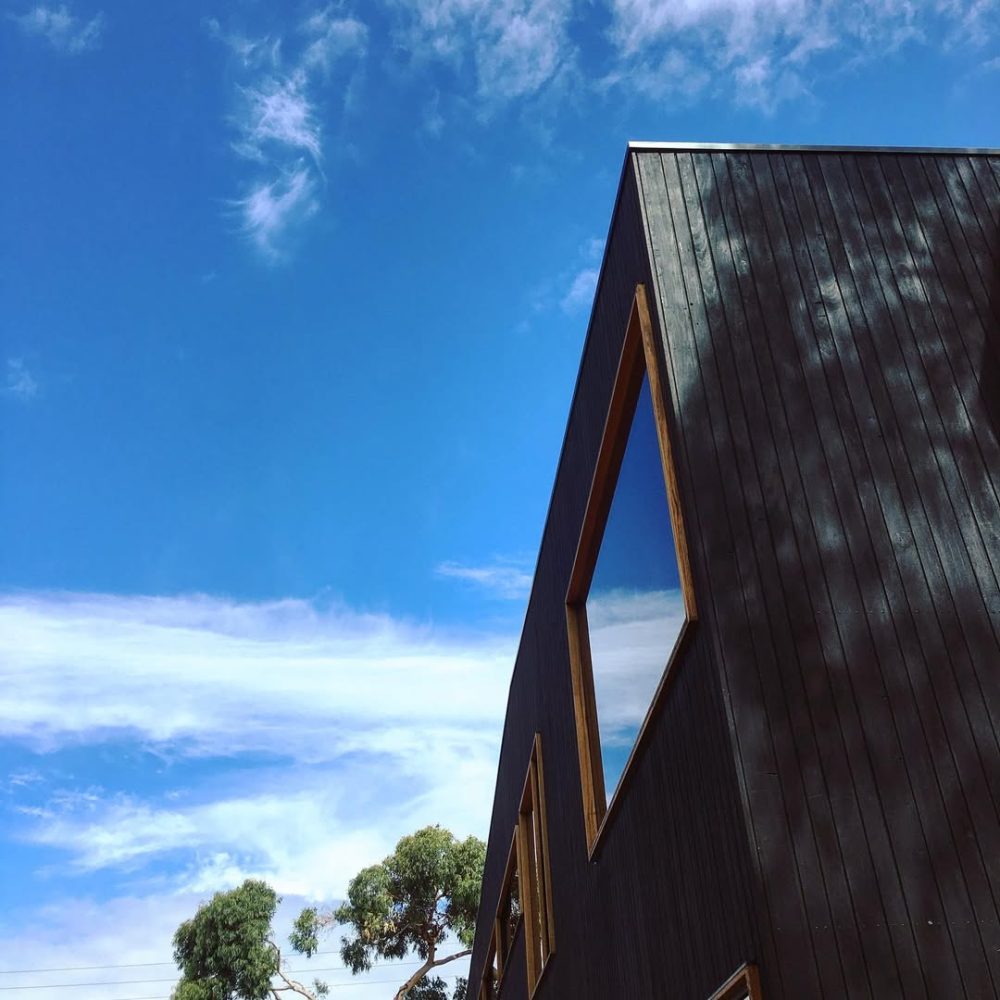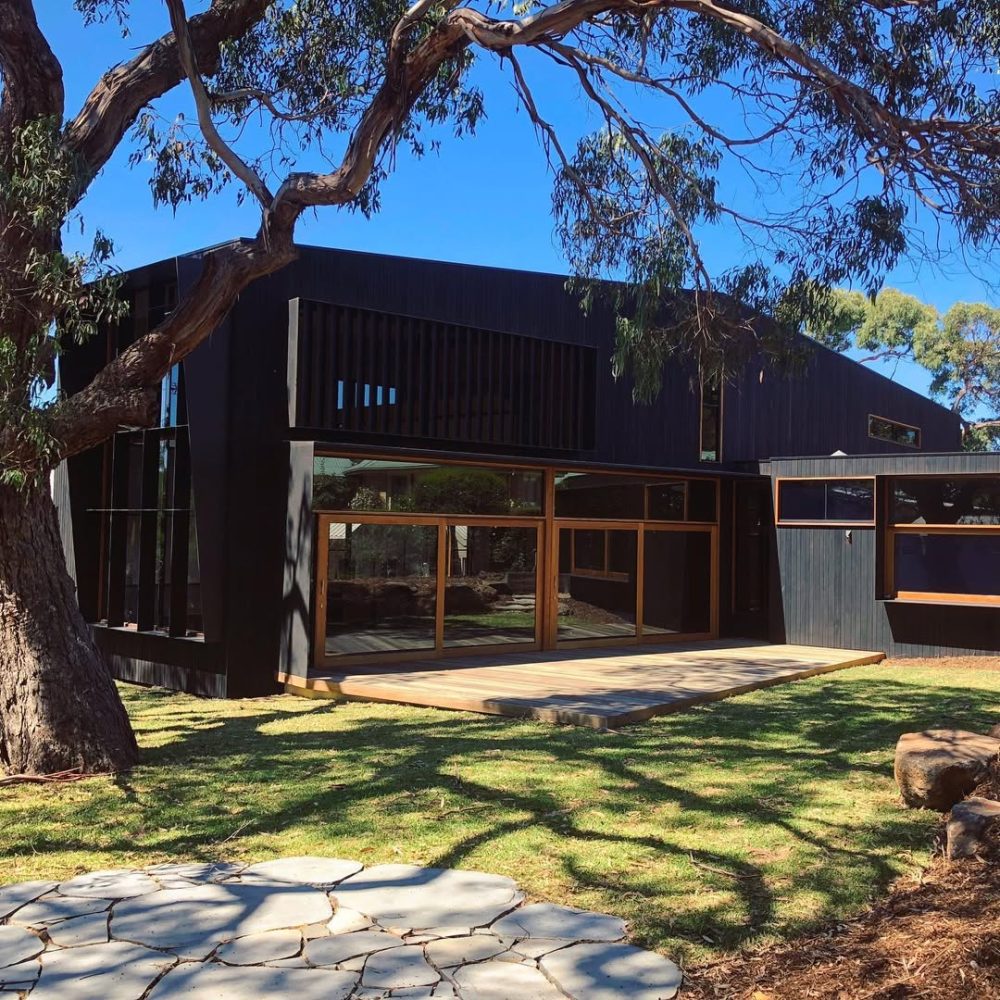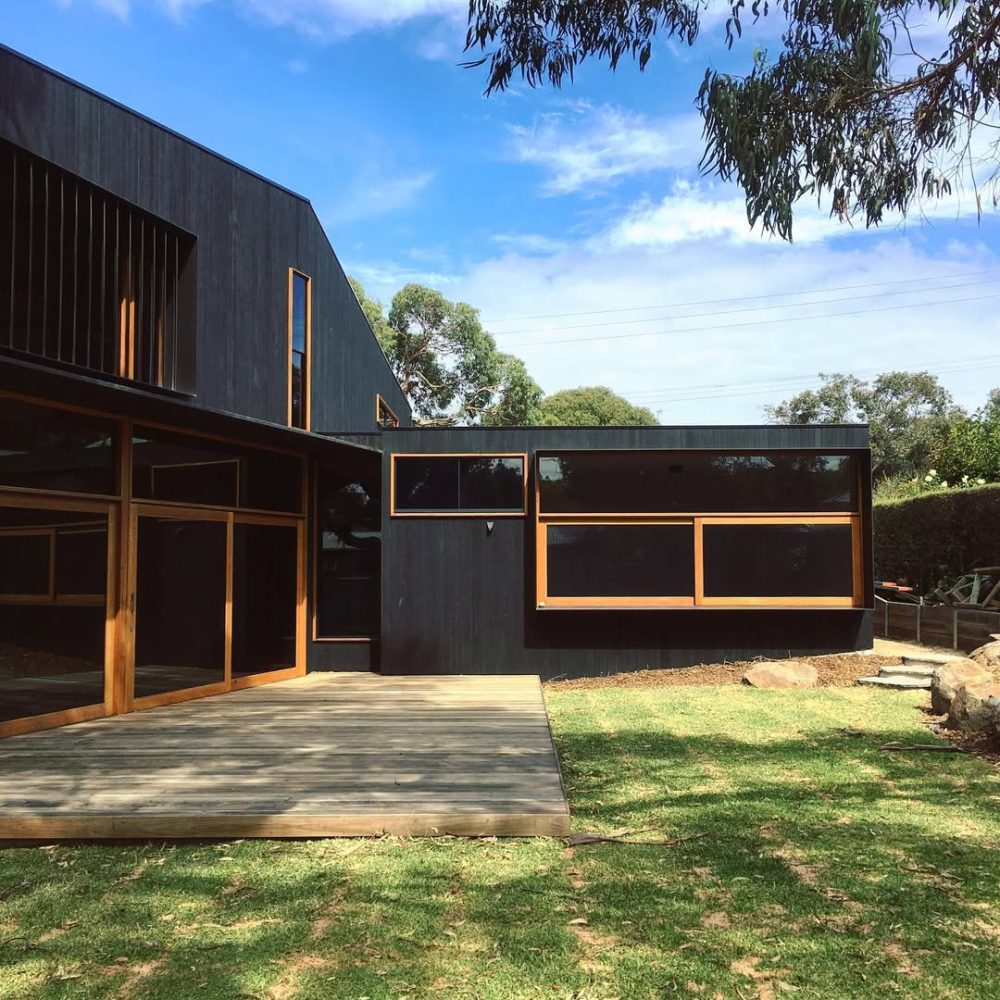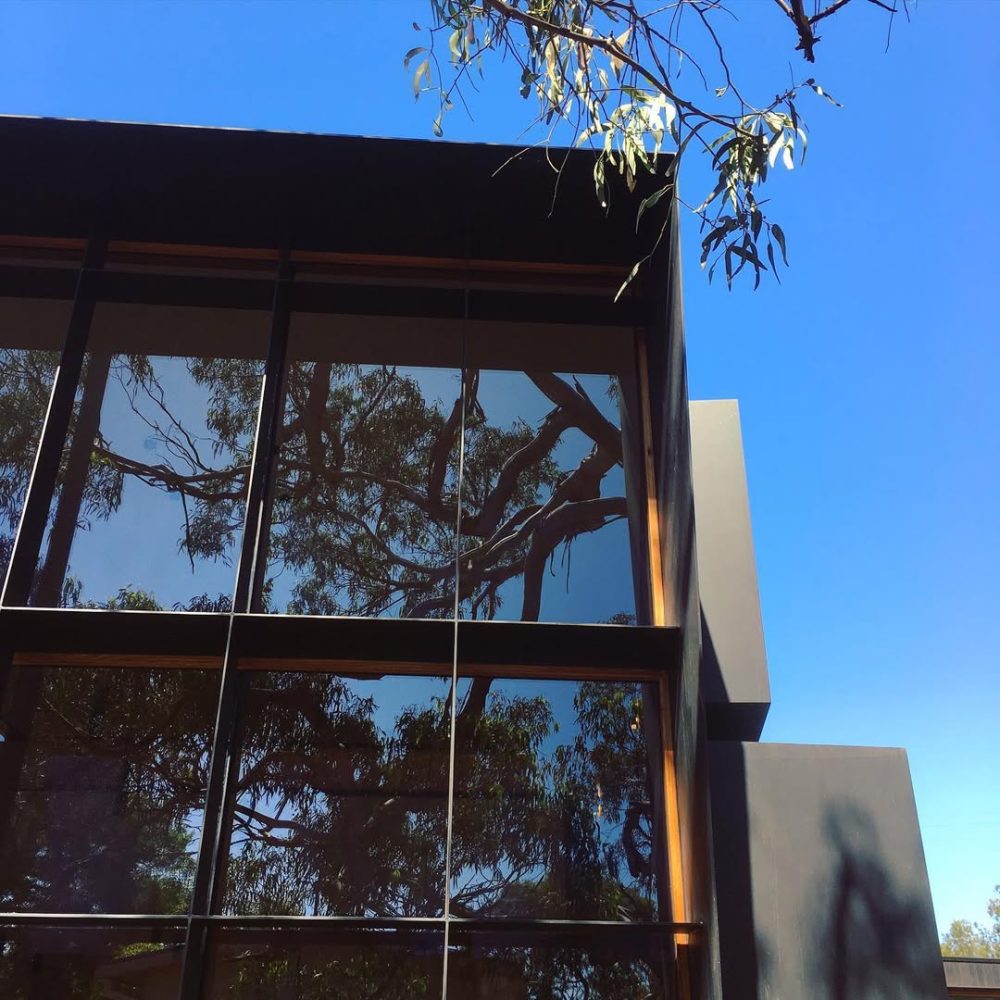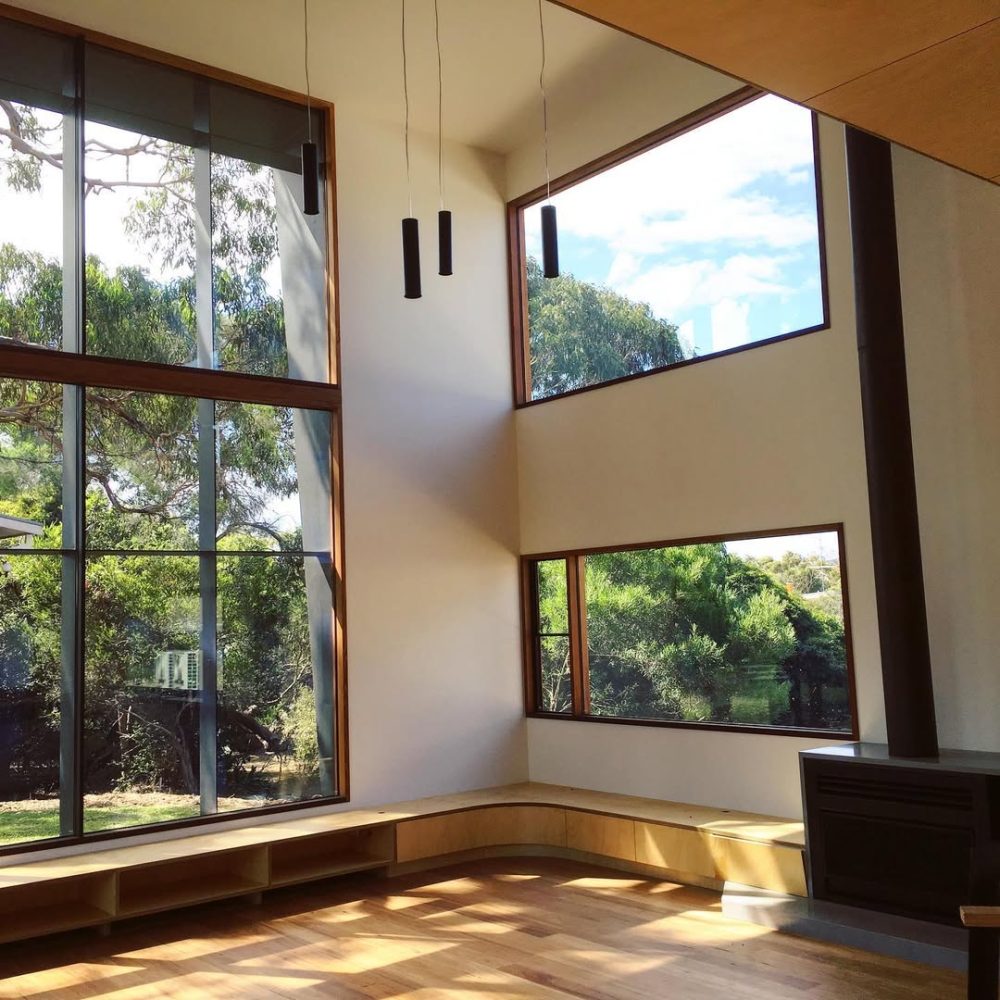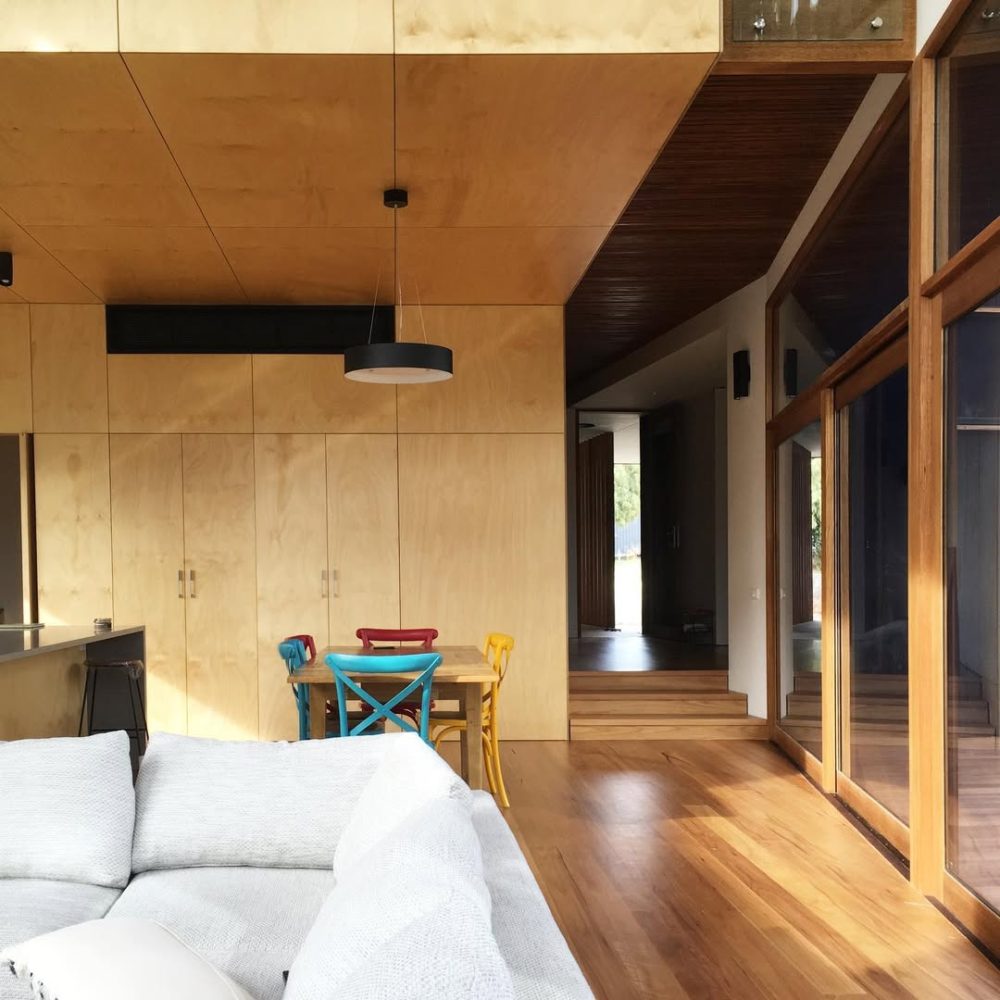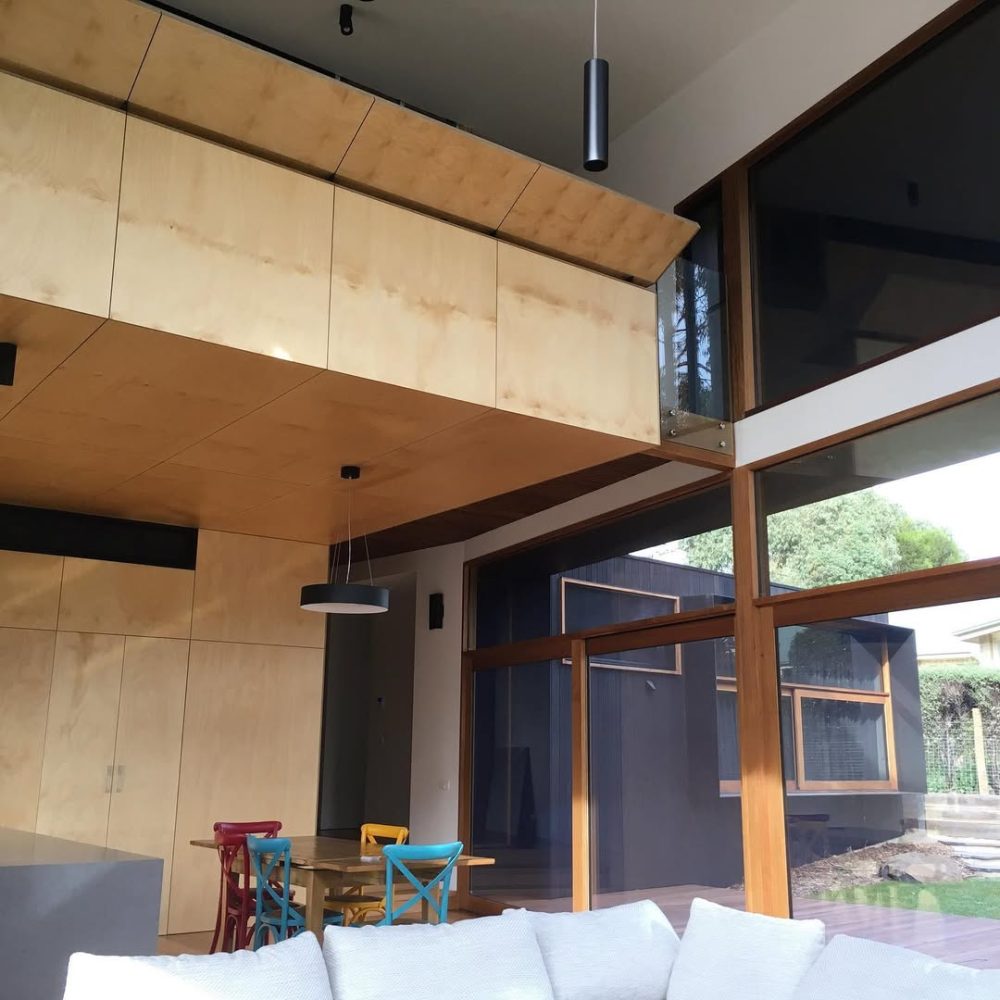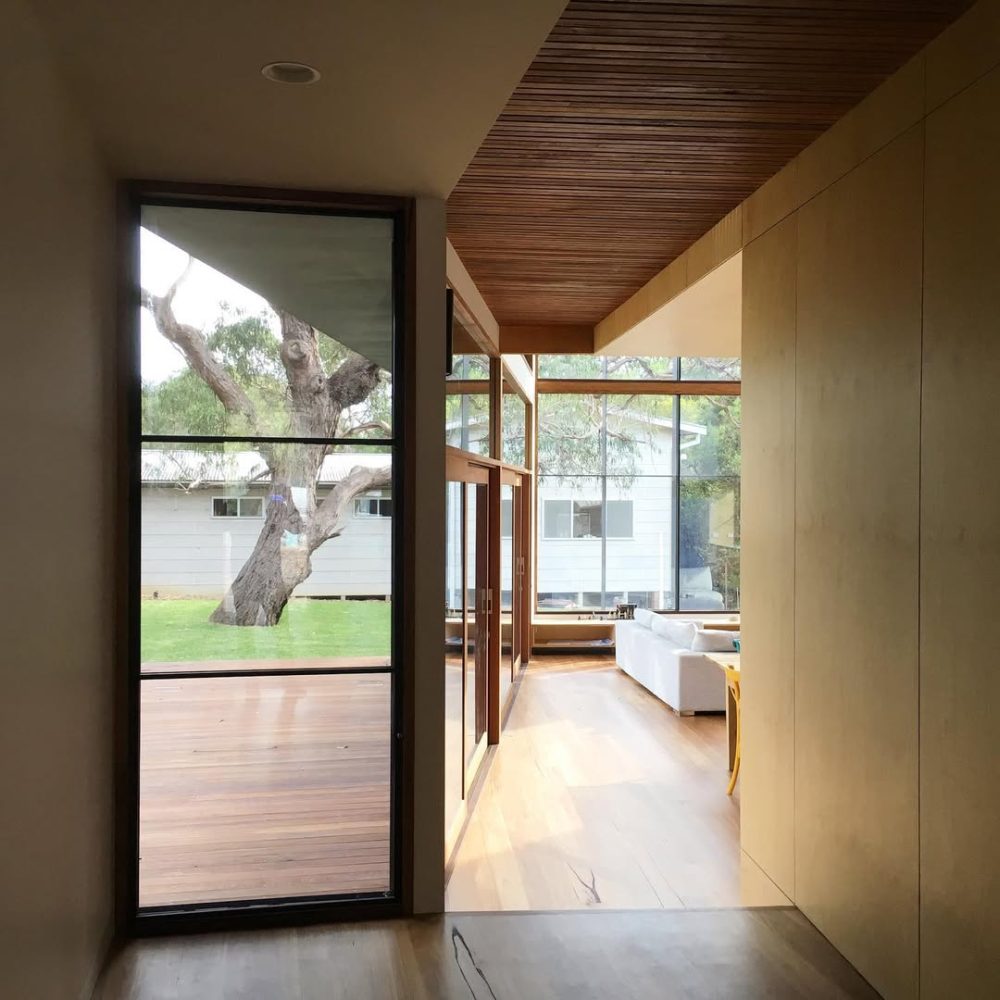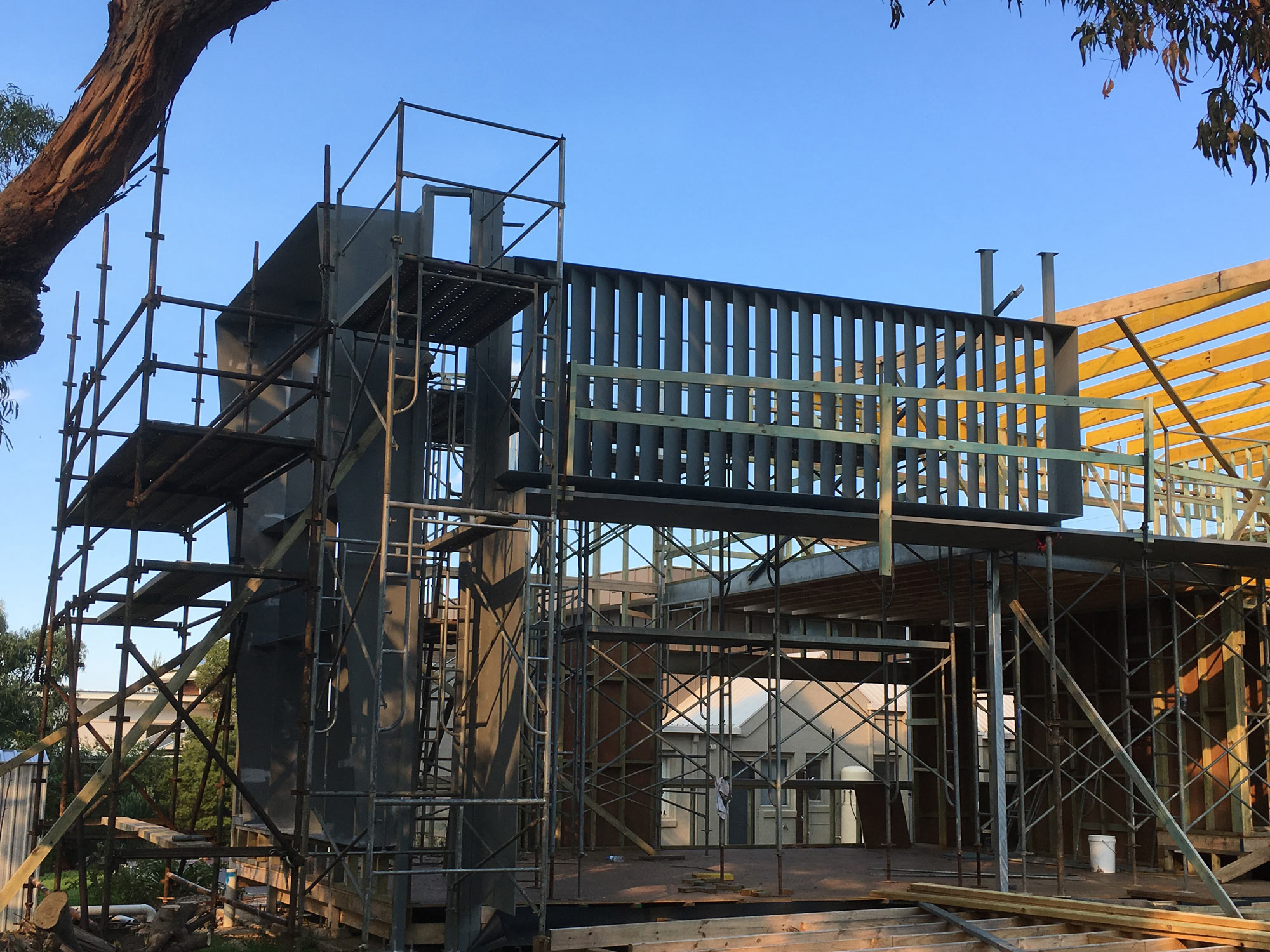Wathaurong House
Wathaurong House
Wathaurong House, Aireys Inlet, 2016 -2018
Positioned quietly behind a veil of native vegetation, this home has been shaped to preserve and celebrate the existing canopy trees of the site. The building steps back from the street, allowing the landscape to take precedence. A two-storey volume is gently bent to open views through to a mature Gumtree in the rear yard, ensuring that even in its scale, the home remains recessive within its setting.
The upper-level rumpus room perches among the treetops, visually immersed in the canopy, while the primary bedroom is tucked beneath, sheltered by both the upper floor and the surrounding understorey. To the west, a single-level carport slips quietly alongside the site boundary. In its overall composition, the building defers to its context—both built and natural.
The material palette draws inspiration directly from the site. A felled tree in the front yard revealed a cross-section of dark bark and golden heartwood, prompting the use of charred recycled Jarrah externally, contrasted with light Hoop Pine plywood linings and cabinetry within. This referencing of the tree’s anatomy is both tactile and symbolic. The charred finish—using the traditional Japanese technique of Shou Sugi Ban—preserves the timber while embedding a sense of memory into the facade.

Internally, timber continues across both floors, with decking boards lining the hallway at the upper level to create a subtle visual and acoustic bridge between the home’s two wings. Living spaces are all oriented to the north, where deep steel hoods offer passive solar protection while framing views outward. A fine steel screen shades the western glazing, its angled louvres allowing filtered views into the gum canopy while mitigating afternoon heat.
The home incorporates a range of energy-efficient measures, including photovoltaic panels and solar evacuated tubes for hot water. Generous insulation, double glazing, and carefully considered orientation work in concert to ensure year-round comfort with minimal reliance on mechanical heating or cooling.
Wathaurung House has been shaped not as an imposition on the land, but as a quiet companion to it. Its materials and form respond directly to site, season, and surrounding landscape—allowing the trees to remain the true protagonists.






